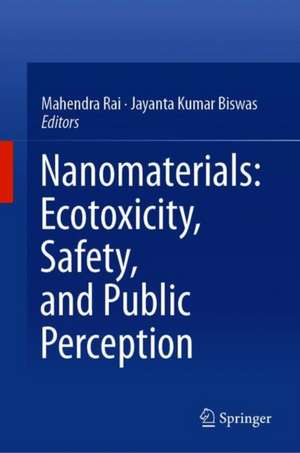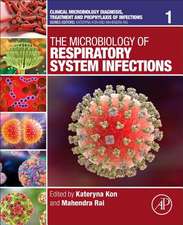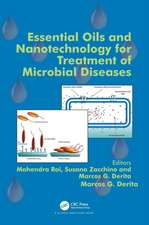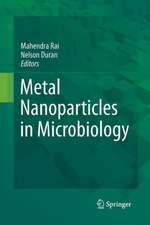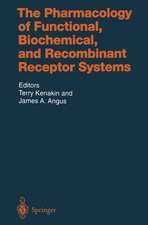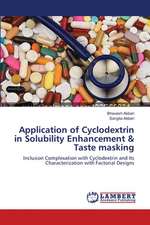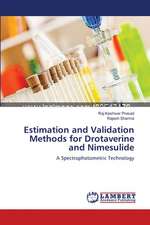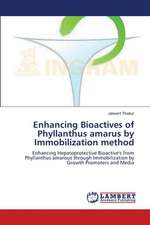Nanomaterials: Ecotoxicity, Safety, and Public Perception
Editat de Mahendra Rai, Jayanta Kumar Biswasen Limba Engleză Hardback – 17 ian 2019
Preț: 1421.76 lei
Preț vechi: 1496.60 lei
-5% Nou
Puncte Express: 2133
Preț estimativ în valută:
272.06€ • 290.92$ • 226.83£
272.06€ • 290.92$ • 226.83£
Carte tipărită la comandă
Livrare economică 17 aprilie-01 mai
Preluare comenzi: 021 569.72.76
Specificații
ISBN-13: 9783030051433
ISBN-10: 3030051439
Pagini: 290
Ilustrații: XVI, 370 p. 45 illus., 37 illus. in color.
Dimensiuni: 155 x 235 mm
Greutate: 0.72 kg
Ediția:1st ed. 2018
Editura: Springer International Publishing
Colecția Springer
Locul publicării:Cham, Switzerland
ISBN-10: 3030051439
Pagini: 290
Ilustrații: XVI, 370 p. 45 illus., 37 illus. in color.
Dimensiuni: 155 x 235 mm
Greutate: 0.72 kg
Ediția:1st ed. 2018
Editura: Springer International Publishing
Colecția Springer
Locul publicării:Cham, Switzerland
Cuprins
PART 1-GENERAL Ecotoxicology Issues with Nanomaterials.- Nanomaterials: What are they, why they cause ecotoxicity, and how this can be dealt with?.- Nano-bio interactions and ecotoxicity: Plenty of room at the bottom but tyranny at the top.- Chemical Structure and toxicity of Nanomaterials used in Food and Food Products.- Toxicity and Safety Evaluation of Nanoclays.- Toxicity of nanoparticles on soil mycoflora.- Ecotoxicity of nanometals: The problems and solutions.- Electrochemical assessment of the interaction and toxicity of carbon nanomaterials on microbial living cells.- Nanotoxicity in Plant Systems.- Nanotoxicity of lipid based nanomedicines.- Toxicity of Silver and zinc Nanoparticles in an aquatic environment.- PART 2-RISKS.- Carbon nanomaterials.- Potential risks to human health and the environment.- Nanoparticles emitted by biomass burning: Characterization and monitoring of risk.- Unintentionally produced nanomaterials and different aspects related to their risks.- PART 3 SAFETY ISSUES AND PUBLIC PERCEPTION.- Nanotechnological regulations in Brazil.- Nanohazards and safety challenges.- Regulatory Framework for Nano-materials in Agri-Food Systems.
Notă biografică
Mahendra Rai is a Professor and Head at the Department of Biotechnology, Sant Gadge Baba Amravati University at Amravati, Maharashtra, India. He was a Visiting Scientist at the Department of Bioenergetics, University of Geneva, Switzerland in 2004 and at the Department of Plant Protection of Debrecen University, Debrecen, Hungary in 2005 and 2008. He visited Department of Chemical Biology, University of Campinas, Brazil under Indo-Brazil Research Programme (DST-CNPq collaboration) in 2009, 2011 and 2012. In 2012, he was visiting Professor in Nicolaus Copernicus University, Torun, Poland. In 2013 he was invited by State University of Campinas, Brazil. He was also visiting professor in 2015 in Ostrava, Czech Republic. His area of expertise includes microbial biotechnology and nanobiotechnology. His present research interests are nanobiotechnology in medicine, agriculture and bioethanol production. He has published more than 325 research papers in national and international journals. In addition, he has edited/authored more than 40 books and 6 patents.
: Dr. Jayanta Kumar Biswas
Textul de pe ultima copertă
The environment is prone to suffer pollution and toxic insult from generations of nanomaterials as well from accidental releases during production, transportation, and disposal operations. The NMs could interact with and cause adverse biological effects at cellular, subcellular, and molecular levels. Assessing potential environmental/ecological risks requires quality information on transport and fate of nanoparticles in the environment, exposures and vulnerabilities of organisms to the nanomaterials and standard methods for assessing toxicity for aquatic or terrestrial organisms and human health. The systematic risk characterization and evaluation of the safety of nanomaterials require a multidisciplinary approach and convergence of knowledge and efforts from researchers and experts from toxicology, biotechnology, materials science, chemistry, physics, engineering, and other branches of life sciences. Although studies are beginning to appear in the literature addressing the toxicity of various nanomaterials and their potential for exposure, at this stage definitive statements regarding the impacts of nanomaterials on human health and the environment remain sketchy requiring an increased level of precautions with regard to nanomaterials, as has happened with other emerging contaminants and technologies (e.g., biotechnology). The need for an increased level of understanding the perception of risk and of benefits will vary and is likely to influence public, regulatory, and non-governmental activities regarding risk and benefit evaluations. Systematic identification and assessment of the risks posed by any new technology are essential. A prudent, integrated, and holistic approach is required to develop best practices based on the scientific understanding about what we know and what we don’t know but need to know. Nanomaterials addresses key issues of ecotoxicological actions and effects of nanomaterials on life and environment, their threats, vulnerability, risks, and public perception. The readers learn to read bad news objectively and think about and search for ecological ‘green’ solutions to current environmental and ecological problems with blue, grey, brown, and red shades for building a sustainable ecosystem. It shows how this molecular terrain is a common ground for interdisciplinary research and education that will be an essential component of science, engineering and technology in the future. The book is divided into three sections. Section I includes general topics related to ecotoxicity of nanomaterials to microbes, plants, human and environment. Section 2 incorporates risks generated by the use of nanomaterials. Section 3 discusss safety issues and the public.
Caracteristici
Demonstrates how this molecular terrain is a common ground for interdisciplinary research and education that will be an essential component of science, engineering and technology Makes the case for the need for an increased level of understanding the perception of risk and of benefits that vary and are likely to influence public, regulatory, and non-governmental activities regarding risk and benefit evaluations Addresses key issues of ecotoxicological actions and effects of nanomaterials on life and environment, their threats, vulnerability, risks, and public perception Discusses nanomaterials in food, clay, soils, medicines, and unintentionally produced nanomaterials. Presents worldwide safety issues Includes authors from India, Turkey, Brazil, Poland, Russia, Czech Republic and Pakistan
